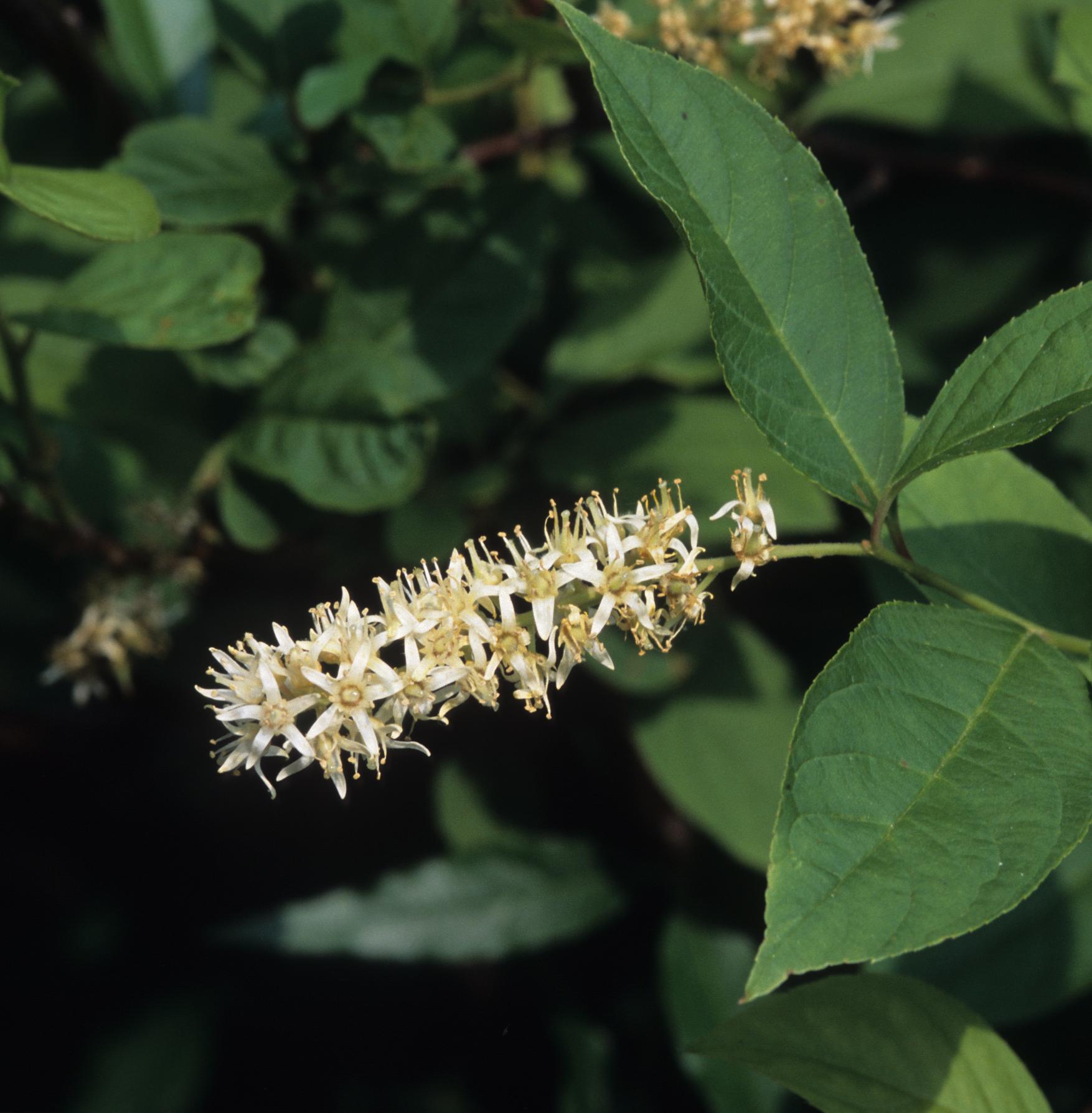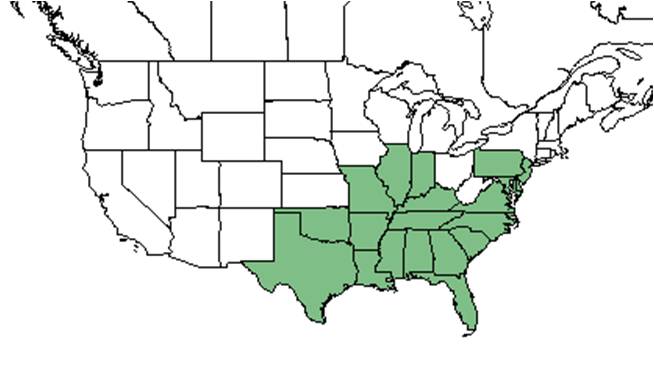Difference between revisions of "Itea virginica"
Emmazeitler (talk | contribs) (→Pollination) |
|||
| Line 33: | Line 33: | ||
==Ecology== | ==Ecology== | ||
===Habitat=== <!--Natural communities, human disturbed habitats, topography, hydrology, soils, light, fire regime requirements for removal of competition, etc.--> | ===Habitat=== <!--Natural communities, human disturbed habitats, topography, hydrology, soils, light, fire regime requirements for removal of competition, etc.--> | ||
| − | I. virginica | + | ''I. virginica'' has been found in wet and shaded loamy areas and wooded floodplains.<ref name="FSU"> Florida State University Herbarium Database. URL: http://herbarium.bio.fsu.edu. Last accessed: June 2021. Collectors: Loran C. Anderson. States and counties: Florida: Gadsden.</ref> Associated species: ''Osmunda, Triadenum, Boehmeria'', and ''Leucothoe axillaris''.<ref name="FSU"/> |
| − | + | ||
| + | |||
| + | <!--moist forests or thickets and along streambanks.<ref name="weakley">Weakley, A.S. 2015. Flora of the southern and mid-atlantic states. Working Draft of 21 May 2015. University of North Carolina at Chapel Hill, Chapel Hill, North Carolina.</ref>--> | ||
| + | |||
===Phenology=== <!--Timing off flowering, fruiting, seed dispersal, and environmental triggers. Cite PanFlora website if appropriate: http://www.gilnelson.com/PanFlora/ --> | ===Phenology=== <!--Timing off flowering, fruiting, seed dispersal, and environmental triggers. Cite PanFlora website if appropriate: http://www.gilnelson.com/PanFlora/ --> | ||
''I. virginica'' has been observed to flower from March to May and in June with peak inflorescence in April.<ref>Nelson, G. [http://www.gilnelson.com/ PanFlora]: Plant data for the eastern United States with emphasis on the Southeastern Coastal Plains, Florida, and the Florida Panhandle. www.gilnelson.com/PanFlora/ Accessed: 12 DEC 2016</ref> | ''I. virginica'' has been observed to flower from March to May and in June with peak inflorescence in April.<ref>Nelson, G. [http://www.gilnelson.com/ PanFlora]: Plant data for the eastern United States with emphasis on the Southeastern Coastal Plains, Florida, and the Florida Panhandle. www.gilnelson.com/PanFlora/ Accessed: 12 DEC 2016</ref> | ||
Revision as of 08:17, 7 June 2021
| Itea virginica | |
|---|---|

| |
| Photo taken by Gil Nelson | |
| Scientific classification | |
| Kingdom: | Plantae |
| Division: | Magnoliophyta - Flowering plants |
| Class: | Magnoliopsida - Dicotyledons |
| Order: | Rosales |
| Family: | Grossulariaceae |
| Genus: | Itea |
| Species: | I. virginica |
| Binomial name | |
| Itea virginica L. | |

| |
| Natural range of Itea virginica from USDA NRCS Plants Database. | |
Common name: Virginia-willow, Sweetspire, Tassel-white.[1]
Contents
Taxonomic notes
Synonyms: none.[1]
Varieties: none.[1]
Description
A description of Itea virginica is provided in The Flora of North America.
Distribution
This plant is found in southern New Jersey, south to Florida, west to Texas and Oklahoma, and north to southern Illinois and southeastern Missouri.[1]
Ecology
Habitat
I. virginica has been found in wet and shaded loamy areas and wooded floodplains.[2] Associated species: Osmunda, Triadenum, Boehmeria, and Leucothoe axillaris.[2]
Phenology
I. virginica has been observed to flower from March to May and in June with peak inflorescence in April.[3]
Pollination
The following Hymenoptera families and species were observed visiting flowers of Itea virginica at Archbold Biological Station:[4]
Apidae: Apis mellifera
Megachilidae: Megachile parallela, M. xylocopoides
Sphecidae: Bicyrtes quadrifasciata
Conservation and management
Cultivation and restoration
Photo Gallery
References and notes
- ↑ 1.0 1.1 1.2 1.3 Weakley, A.S. 2015. Flora of the southern and mid-atlantic states. Working Draft of 21 May 2015. University of North Carolina at Chapel Hill, Chapel Hill, North Carolina.
- ↑ 2.0 2.1 Florida State University Herbarium Database. URL: http://herbarium.bio.fsu.edu. Last accessed: June 2021. Collectors: Loran C. Anderson. States and counties: Florida: Gadsden.
- ↑ Nelson, G. PanFlora: Plant data for the eastern United States with emphasis on the Southeastern Coastal Plains, Florida, and the Florida Panhandle. www.gilnelson.com/PanFlora/ Accessed: 12 DEC 2016
- ↑ Deyrup, M.A. and N.D. 2015. Database of observations of Hymenoptera visitations to flowers of plants on Archbold Biological Station, Florida, USA.